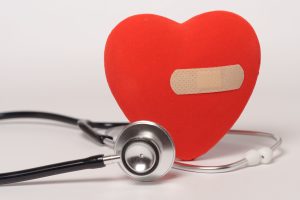
A sudden pain in your chest might be a sign of a heart attack, a panic attack, or even a broken heart. Commonly referred to as “broken heart syndrome,” stress cardiomyopathy is a type of cardiac dysfunction caused by sudden physical or psychological stress, such as the stress caused by a car accident or a family member passing away.
But it’s not always easy to identify. That’s why Jooyoung Ryu, a third-year undergraduate majoring in computer science, is using his Provost’s Undergraduate Research Award to help train a machine learning model to better distinguish between stress cardiomyopathy and other acute cardiac syndromes, such as myocardial infarction—the technical term for a heart attack.
Whereas the effects of a heart attack are irreversible, the heart generally returns to normal with stress cardiomyopathy, according to Ryu. This also means that these conditions are treated differently.

Jooyoung Ryu
“But right now there’s no pragmatic clinical tool to differentiate early on if the patient has stress cardiomyopathy or myocardial infarction,” Ryu says.
That’s where machine learning comes in. Advised by Robert David Stevens, an associate professor of anesthesiology and critical care medicine, Ryu and other members of the Laboratory of Computational Intensive Care Medicine at the Johns Hopkins Hospital are training an AI model to look at electrocardiograms, or ECGs—tests that record the electrical activity of the heart—for signatures that can help physicians better distinguish between different types of acute cardiac dysfunction shortly after their onset.
Making this distinction could significantly increase precision in directing additional tests and treatments—especially ones that are higher-risk and resource-intensive, such as coronary angiography, which is a procedure that uses dye to measure how blood moves through the heart.
So far, the team has trained its model using age, gender, and ECG waveforms as input data.
“Currently we have a very strongly functioning model,” Ryu reports. “Now we’re focusing on making it perform better, moving on to hyperparameter tuning and external validation from other datasets, such as those on the JHU Precision Medicine Analytics Platform.”
As a pre-med student, Ryu says his main academic interests lie in machine learning applications to medicine and biomedical data science.
“I also volunteer at a local fire station, where I’ve observed some cardiac patients,” he says. “So I’ve always been interested in cardiac diseases.”
Provost Joseph Cooper established the PURA program in 1993 with an endowment by the Hodson Trust to support and encourage Hopkins undergraduate students to engage in independent research, scholarly, and creative projects.